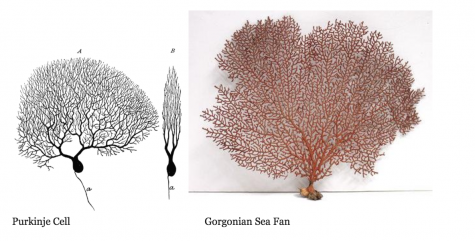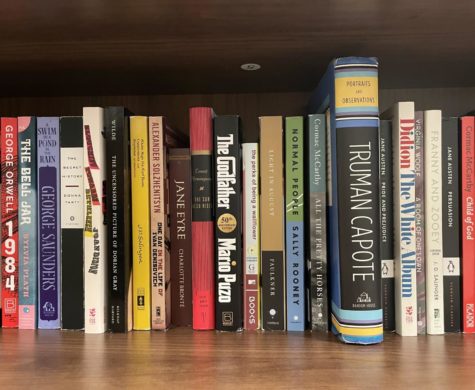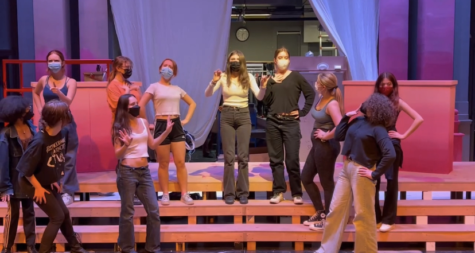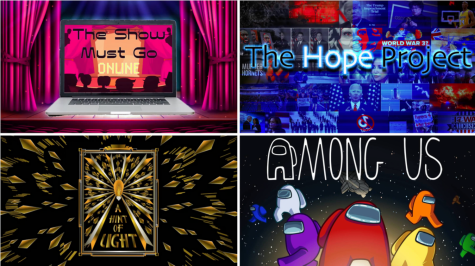“The Body Reef” By Katrina Fuller
If you stumbled upon the art exhibit called The Body Reef in Lower Manhattan, you definitely wouldn’t think that a high school senior was the creator behind the whole exhibit. But you’d be wrong, because in fact, the mastermind behind the clay creation was BC Senior Katrina Fuller.
Katrina became interested in visual arts in 9th grade, but had never taken many technical classes in drawing, painting, or sculpting. So she was eager to undertake this challenge to put her visual landscape into something concrete. She began this project in July, working in a studio in Williamsburg. During this process, she was able to take some art classes, and meet some very interesting artists, one of which was the sculptor Ingo Appel, whom she took a few classes with, and helped influence her sculpting for the exhibit. The biggest takeaway for Katrina though, was that, “all that really matters is that you’re trying. Even if you have never sculpted before and have to do every step of the project at least twice before getting it right (both true), all that really matters is that you’re trying.”
It’s unbelievable that someone who had never sculpted before was able to make not only such an intricate creation, but also such meaningful one. If you just took a glance at her two massive clay pieces, you would see a color filled coral reef. What you might not notice though, is that each piece of coral has a resemblance to a human body part. The human body and her interest in neuropathology (including a brain autopsy she performed) is where she drew her inspiration from. “I immediately noticed that these dendritic structures were not new to me,” she says, “but they were a mirror of the natural shapes that surrounded me every day.” She felt as though humans are aware that we are ruining coral ecosystems, but that we don’t do anything about it because it is far away from us, and we have no personal connection to the issue. So she asked herself, “How can you make people personally identify with the issue? Also, how do you make people realize that harming this ecosystem is also harming ourselves?” Keeping this idea in mind, she sculpted tirelessly (sometimes working until 3am and falling asleep at the studio), to have an end result that would “conjure a new sense of empathy with the natural world.”
After starting the process in July, she worked until October 26th when opening night finally came. The studio on Rivington Street in Lower Manhattan suddenly was filled with friends, family and even some Berkeley Carroll teachers. “It was very interesting to see how people responded to it differently,” Katrina said. “I just hope that this project plays at least a small part in helping bring out new kinds of awareness.”

Check out the transcript from my interview with her!
- What inspired you to do this?
I am very interested in neuropathology and when I was first exposed to microscope imaging and my first brain autopsy, I immediately noticed that these dendritic structures were not new to me—but they were a mirror of the natural shapes that surrounded me every day, whether it’s the branching of a tree, cracks in a piece of rock, or the skeleton of a leaf. This is what inspired my project. There’s this feeling of guilt growing up as a millennial, I think. All, if not most, of us are aware that humans are responsible for the pandemic bleaching of corals, but (1) thesr problems are far away from us, so what can we even do about them? and (2) there aren’t many personal incentives because this doesn’t appear to affect the individual. So, I decided to ask myself the question: How can you make people personally identify with this issue? Also, how do you make people realize that harming this ecosystem is also harming ourselves?

- How long have you been working on it and what the process was like?
I worked on it from July-October. First, at a studio in Williamsburg and then at one in Gowanus. This was a very freeing experience for me, in part because I was able to take a few art classes and meet many incredible people. Also because I learned that all that really matters is that you’re trying. Even if you have never sculpted before and have to do every step of the project at least twice before getting it right (both true), all that really matters is that you’re trying.
- What are you trying to show with your art?
I’m trying to show the parallel between human anatomy and shapes in nature in order to conjure a new sense of empathy with the natural world.
- Quote about opening night.
Opening night was fun! It was very interesting to see how people responded to it differently, and my friends showed me so much support. I just hope that this project plays at least a small part in helping bring out new kinds of awareness. I think what we need right now is more people trying to find different ways of thinking about coral bleaching and climate change in general because clearly how we’re thinking right now isn’t working like it should.







